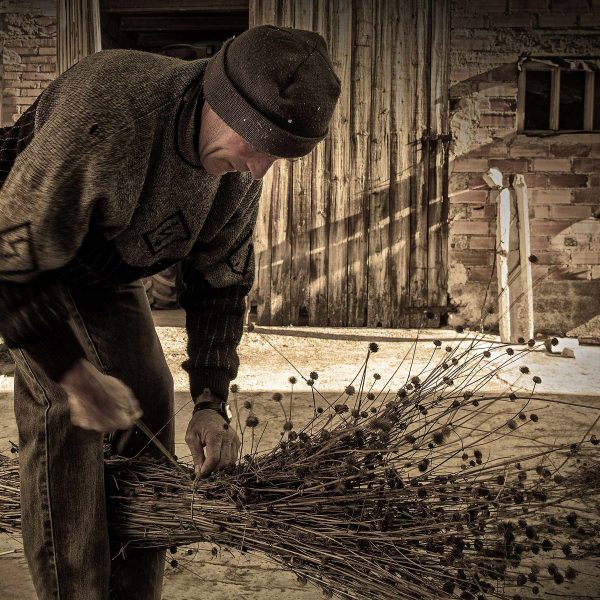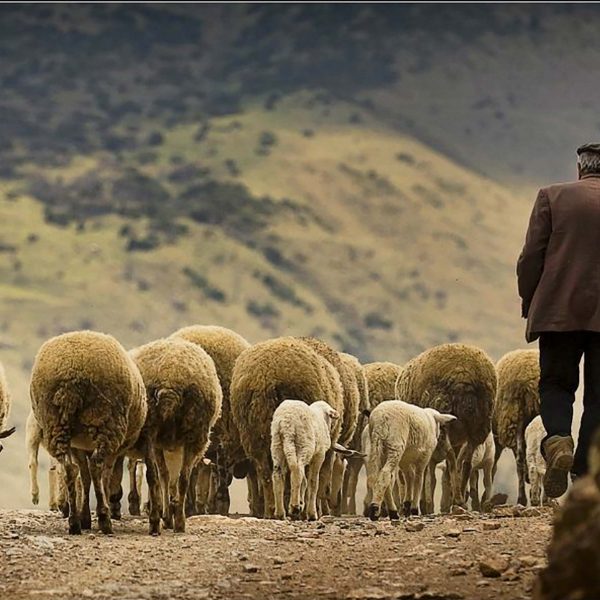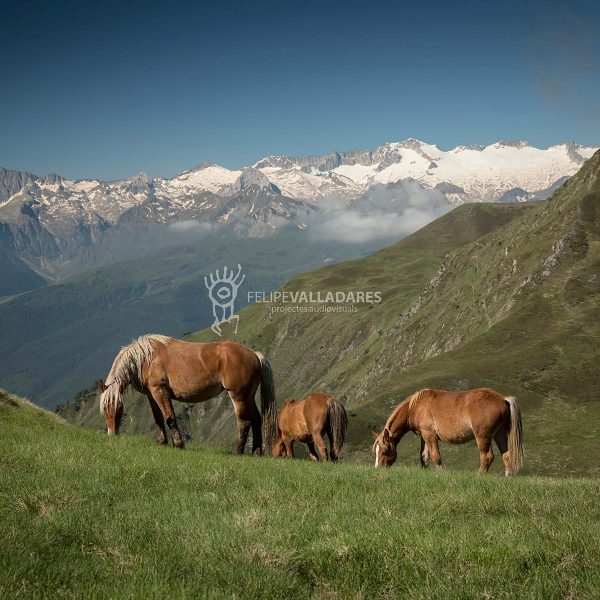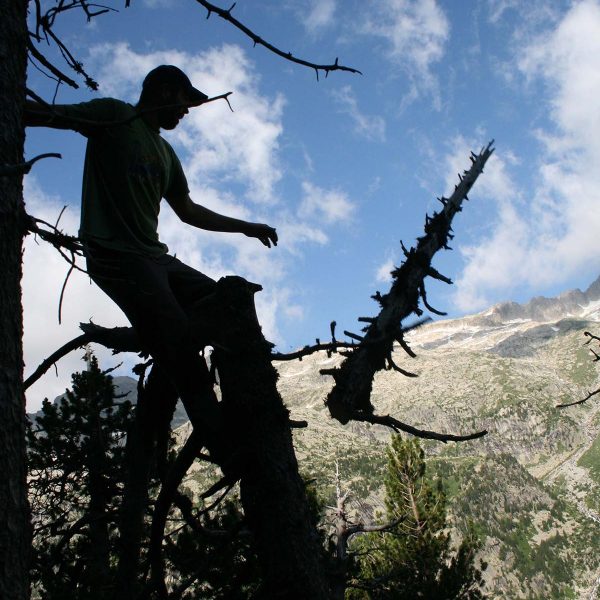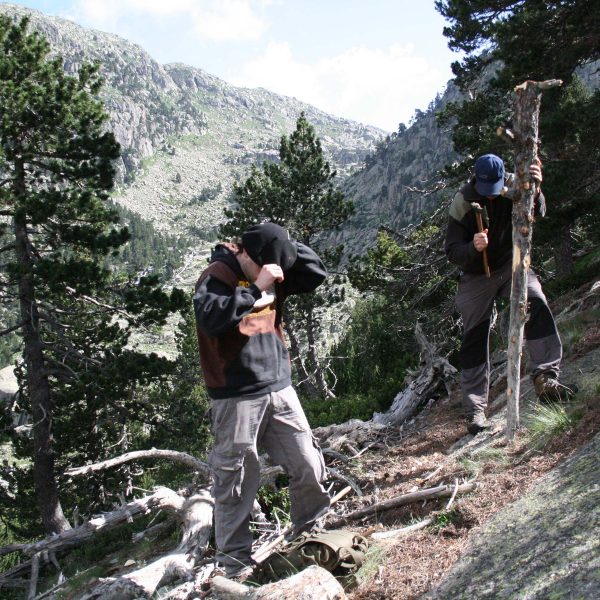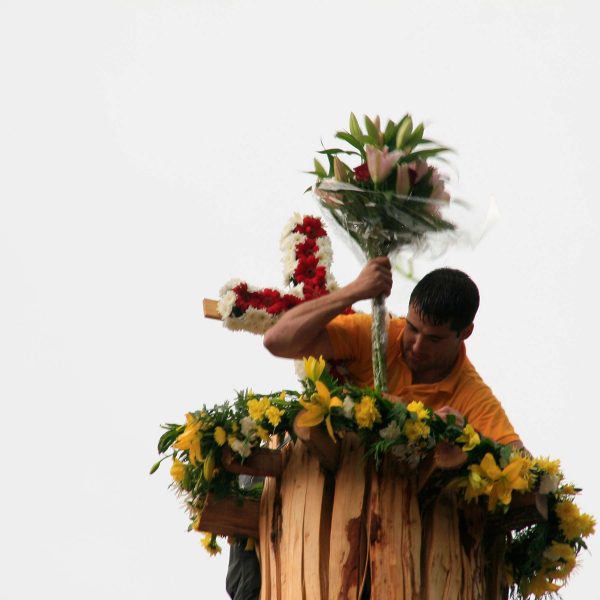The Pyrenean fire festivals are generally celebrated at the summer solstice, reflecting the rhythms of nature, but preparations begin some weeks, or even months, beforehand, usually at the beginning of spring. The falles and brandons first have to be cut down in the forest, and it is necessary to organize the festivities.
In some villages the festival is organized by specific fallaire associations, while in others it is the festival committee, or the village council itself.
Fire festivals and natural rhythms
Ever since its origins, fire festivals have been related to the natural environment. The summer solstice marked the renewal of the annual cycle in the life of mountain societies. In the period around Saint John’s Eve, the animals are taken to the high mountain pastures.
The materials
Various different types of materials are used in the fire festivals. The kind of wood depends both on the traditions and the forests near the villages. The variety of natural elements employed is an example of the biodiversity of the Pyrenees. In Isil, in Catalonia, the falles are usually made of mountain pine; in other places, in Pont de Suert, for example, where there are fewer trees, the torches are usually made from pieces of dry boxwood. In Occitania, the choice of the tree for the brandon depends on specialists, the National Forestry Office (ONF), or farmers. The tree may be oak, beech, pine, or fir, depending on the altitude and the village’s natural environment.
The plants and trees used in the festivals are as follows:
- Scots pine (Pinus sylvestris)
- Mountain fine (Pinus uncinata)
- Silver fir (Abies alba)
- Hazel (Corylus avellana)
- Black poplar (Populus nigra)
- European Aspen (Populus tremula)
- Box (Buxus sempervirens)
- Oak (Querqus sp)
- Silver birch (Betula pendula)
- Wild cherry (Prunus avium)
- Rye (Secale cereale)
- Cephalaria leucantha grass
- Cotoneaster tomentosa
- Beech (Fagus sylvatica)
- Juniper (Juniperus communis)
Preparation of the Haro in the Aran Valley
The first major event in the Les Hèsta deth huec (fire festival) is the Shasclada (preparation) deth Haro in May. A tree is cut down in the forest and the trunk is brought to the village (la Baixada) during the morning. The 10- to 12-meter-long fir trunk is carried to the village square known as the Plaça deth Haro. On the route across the Garonne River, bars and restaurants along the route serve sweet wine and Aran pastries to the people carrying the trunk. Following a community dinner at noon, the Shasclada begins. This consists of splitting opening the trunk with mallets and wedges, which allows the air to dry the tree trunk so it will burn more quickly. Trestles are set up in the square for this purpose.
The haro is erected in the square on Saint Peter’s Day, around five days after the burning of the previous year’s haro. There is also a procession led by the most recently married couple, and the new Haro is crowned with flower offerings (a crown, a bouquet, and a cross), which are symbols of fertility and fecundity. The dances and folklore group Es Corbilhèrs de Les provides the music.
The village of Arties also prepares its taro in May. The villagers fetch a tree trunk from the forest on a Sunday morning, and carry it to the village square to prepare it to be burnt on Saint John’s Eve.
Preparing the falles in Isil
The falles in Isil are usually prepared in May. Villagers and owners of second homes go out early in the morning to the Benabé forest in order to select the pines. They are cut into the correct length (150-180 cms) before being cleaned and debarked. The narrowest side of each falla is pared down. After breakfast, the falles are transported to the Bordes de Lapre, which is the starting point for the fallaires on Saint John’s Eve.
The falla major, which is erected in the church square after a community meal and is more than 10 meters tall, is also prepared on the same day.
Preparation of the Brandon in Bagnères-de-Luchon
The brandons in Occitania are also prepared in April or May. In Bagnères-de-Luichon, the brandon provided by the National Forestry Office is a fir that is 10 to 12 meters high and 50 to 60 centimeters in circumference. Once chopped down, the tree is taken to the esplanade in front of the thermal baths. The preparation of the brandon is a very special stage of the festival, which attracts many visitors who come to see these age-old techniques. The brandon must be dried out completely so it burns more effectively. The trunk is split lengthwise with iron stakes and then bound together with iron rings. After filling the slits with woodchips and straw to make it burn well, the brandon is erected.
 Occitan
Occitan




